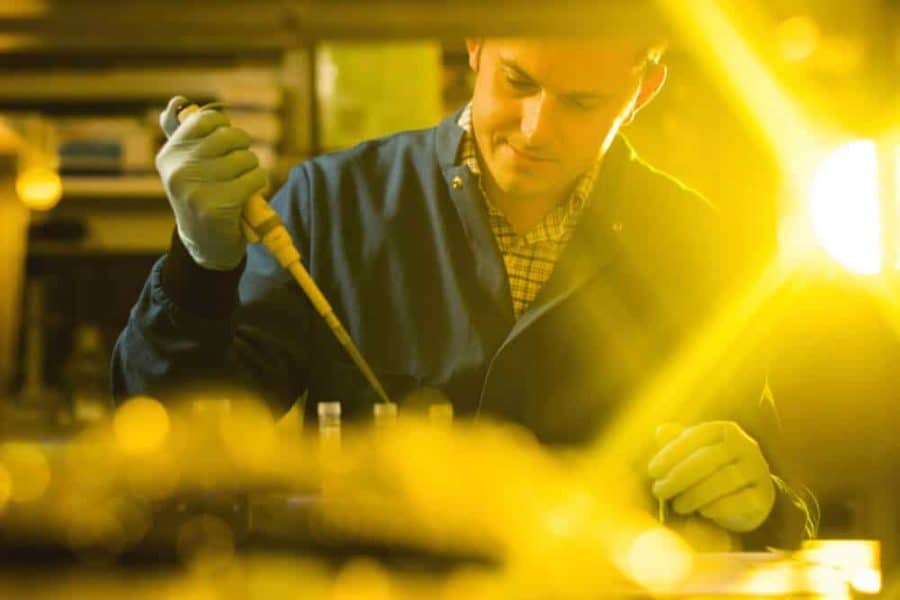Soldiers who survive explosions on the battlefield and civilians who live through serious car accidents often suffer nerve damage in their arms and legs. This can mean losing their sense of touch or their ability to contract their muscles.
Surgeons try to correct nerve damage by taking a functioning nerve from a healthy limb in the body, resizing the nerve, and attaching it to the damaged area. This sacrificial nerve is called an autograft.
This process requires sutures to secure the autograft in place. Surgeons use a needle and nylon thread to sew the new tissue onto the damaged area. But the problem with sutures is that their stiff texture reduces blood flow and hinders natural nerve regeneration. In some cases, this results in sutures doing additional damage to the nerves surgeons are trying to save.
Researchers at Northeastern have engineered a better solution: an adhesive hydrogel that is 15 times stronger than currently available wound sealants. The hydrogel is strong enough to be used on its own, entirely replacing the need for sutures. That means stronger, healthier nerves.
“In our body, nerves are responsible for communicating rapid information,” said Ryan Koppes, an assistant professor of chemical engineering at Northeastern, who created the hydrogel with his colleagues. “All of your sense of touch, as well as muscle control, is conveyed through your nerves.”
The hydrogel may be superior to sutures because it supports nerve growth and regeneration. Researchers found that when individual neurons within nerves were exposed to the hydrogel, they grew significantly in size, strengthening the muscle-brain connection that ultimately controls movement and feeling.
In a paper published recently in the journal Tissue Engineering, the researchers describe how they created the hydrogel by combining two common proteins that occur naturally in the body: gelatin and tropoelastin.
Led by postdoctoral student Jon Soucy, Koppes and his collaborators changed the chemistry of tropoelastin slightly so that it would bond with gelatin. The result is hydrogel surgeons could one day use to connect nerves directly back together in a way that promotes natural regeneration without sutures.
So far, the researchers have put the hydrogel through initial testing with great success. Within the next five to 10 years, they hope to complete testing on humans so the product can be made available to patients who suffer traumatic injuries—including soldiers.
“We’re seeing more soldiers survive due to keeping their core body protected, but then you’ll see their arms, hands, feet, and legs are really undergoing this trauma,” Koppes said. “This is something we’ve been passionate about for a long time, trying to come up with better engineered solutions for nerve repair.”
If our reporting has informed or inspired you, please consider making a donation. Every contribution, no matter the size, empowers us to continue delivering accurate, engaging, and trustworthy science and medical news. Independent journalism requires time, effort, and resources—your support ensures we can keep uncovering the stories that matter most to you.
Join us in making knowledge accessible and impactful. Thank you for standing with us!

